The AMD B550 Motherboard Overview: ASUS, GIGABYTE, MSI, ASRock, and Others
by Dr. Ian Cutress & Gavin Bonshor on June 16, 2020 11:00 AM EST
AMD’s budget motherboard range is often at times more successful than the bigger, full fat versions. Users have in the past got almost all of the same chipset features on these motherboards than they did on the X-series range. That changes with the new B500 series as consumers no longer have PCIe 4.0 on the chipset, instead reverting back to PCIe 3.0. This ultimately should not be an issue, as budget builds are unlikely to have multiple PCIe 4.0 add-in drives, for example. Nonetheless, the high vocal demand for B550 motherboards, especially after AMD launched Ryzen 3, has not gone unnoticed, and there are over 40 new models in the market, most of which should be on sale from today.
B is for Budget, Right?
One of the main complaints about the AMD X570 motherboard line was the wide variation in pricing. As we reported in our X570 motherboard overview, covering over 35 motherboards, the variation in cost from the cheapest to the most expensive was quite eye-watering.
The AMD X570 Motherboard Overview: Over 35+ Motherboards Analyzed
On the high end, we had the limited edition ASRock’s X570 Aqua, a board we went on to review and call a stunning collectors piece, but it was priced at $1000.
On the low-end, we saw a few motherboards go just under $200:
- ASUS Prime X570-P ($170),
- ASUS TUF Gaming X570-Plus ($190),
- ASRock X570 Phantom Gaming 4 ($155),
- ASRock X570 Pro4 ($170),
- ASRock X570M Pro4 ($186),
- Gigabyte X570 Gaming X ($170),
- MSI X570 Gaming Plus ($170), and
- MSI X570-A Pro ($160)
In previous years, this price range used to be the infamous battleground where top-end chipsets would battle it out in the mid-range, not be the entry point into a market. However, X570 did bring a number of new benefits, such as PCIe 4.0 from the processor, PCIe 4.0 from the chipset, and an increased bandwidth to and from the chipset.
So for AMD’s more budget-oriented focused line of motherboards, we should expect to see designs more friendly to those cost-sensitive builds, and for users that don’t need oodles of PCIe 4.0, right? In previous years, we have seen the budget line of motherboards come down as low as $65, which when using a $99 processor, is probably the correct inflection point.
For our overview today, the cheapest motherboard we were told pricing about in advance seems to be $115. That’s about $50 too much on the low end.
But the most expensive motherboard is $280. That price, without any context, sounds insane. For that price the user might as well pick up an X570 motherboard, right? It would seem that the GIGABYTE B550 Aorus Master has to offer something special in order to justify that amount of money. Fortunately, this component is a unique motherboard among B550 and well worth reading up on.
Chipset Differences
One of the key ways for AMD to help reduce the cost of its budget boards is to reduce the amount of features on the chipset compared to the X570 models. The easiest way to do this is to remove PCIe 4.0 from the chipset, pushing it back to PCIe 3.0: the processor still offers PCIe 4.0 use, but anything powered by the chipset will be limited to PCIe 3.0. This has the added benefit of reducing the power consumption of the chipset down to 5 W, rather than 10 W, which means that none of the B550 motherboards come with a chipset fan as standard.
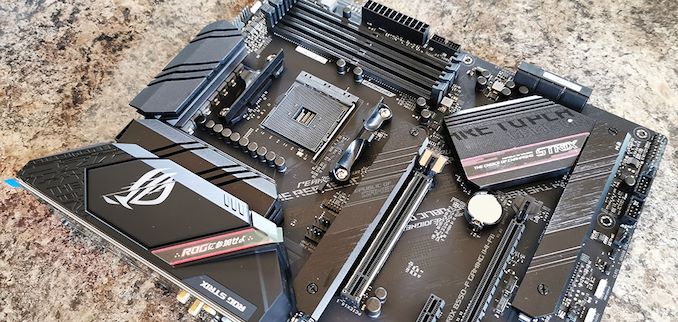
ASUS ROG Strix B550F-Gaming Wi-Fi
The cheaper chipset often doesn’t come with SLI certification by standard, whereas X570 does. This means there was no SLI licence fee to pay, unless the motherboard manufacturer goes out of its way to certify it board-to-board. Given that this is the budget board, and how limited multi-GPU setups are beyond compute workloads in recent years, the pickup of such a feature was likely to be limited on B550 anyway.
Another side effect of trying to reduce costs is a reduced IO support. AMD allows for a number of configurations with B550:
- CPU
- x4 PCIe 4.0 NVMe
- x2 PCIe 4.0 NVMe + 2 x SATA
- x2 PCIe 4.0 NVMe + x2 PCIe 4.0 NVMe
- Chipset
- 4 SATA + 4x PCIe 3.0
- 4 SATA + 2x PCIe 3.0 + 2 SATA
With a peak configuration, without bifurcating the main CPU lanes, motherboards can offer two or three NVMe drives, or up to eight SATA ports. The odd motherboard out in the stack is the Gigabyte B550 Aorus Master, which we will explain when we get to that motherboard [link].
AMD’s own slide on the matter looks like this:
Overall, the B550 chipset seems like a minor upgrade over B450, with eSATA support removed and support for more SATA ports. The 5W TDP is the same as B450, suggesting that B550 is still an ASMedia design but updated.
Processor Support
Another question of B550 is one of processor support. At the announcement of B550, AMD stated that these motherboards would only support the latest Ryzen 3000 processors and newer, essentially limiting B550 to Zen2-based processors at a minimum, and support for future generations of Ryzen, which we believe to cover Zen 2 APUs and Zen 3 hardware next year. Most of the B550 motherboard line has video outputs, and does not support Zen+ APUs, which essentially confirms Zen2 APU support.
| AMD AM4 Motherboard Support | ||||||
| AnandTech | uArch | A320 | B350 X370 |
B450 X470 |
X570 | B550 A520 |
| Ryzen 4000 CPU | Zen 3 | X | X | Beta | ✓ | ✓ |
| Ryzen 4000 APU** | Zen 2 | X | ?Beta | ? ✓ | ? ✓ | ? ✓ |
| Ryzen 3000 CPU | Zen 2 | X | Beta | ✓ | ✓ | ✓ |
| Ryzen 3000 APU | Zen+ | ✓ | ✓ | ✓ | ✓ | X |
| Ryzen 2000 CPU | Zen+ | ✓ | ✓ | ✓ | ✓ | X |
| Ryzen 2000 APU | Zen | ✓ | ✓ | ✓ | X | X |
| Ryzen 1000 CPU | Zen | ✓ | ✓ | ✓ | X | X |
| Athlon A-Series | * | ✓ | X | ✓ | X | X |
| Ryzen Pro CPUs follow their non-Pro equivalents * Excavator or Carrizo ** Unknown - product not announced yet |
||||||
Currently AMD’s Zen 2 processors start at $99 with the Ryzen 3 3100, offering four cores with simultaneous multithreading. You can read our review here.
The AMD Ryzen 3 3300X and 3100 CPU Review: A Budget Gaming Bonanza
Exactly where AMD’s Zen 2 APU line of products will fall on the price spectrum is unclear, however based on previous generations we are likely to see a design using half-cores and almost half-graphics, which puts a hypothetical Ryzen 3 APU at 4 cores and 3 or 4 compute units. If this is the case, then this APU is likely to be more expensive than the Ryzen 3 3100.
Motherboards to Watch Out For
As with any processor generation, there are a few motherboards to keep an eye on. Some are interesting in their own right, based on how the motherboard is wired and configured, whereas others offer visual incentives or seem to come in at a really good price.
GIGABYTE B550 Vision D
On the face of it, this motherboard looks like a rebranded Designare motherboard, but uniquely among our B550 options, it is the only one with a Thunderbolt 3 controller onboard.
It is also the only one with dual gigabit Ethernet and Wi-Fi 6, and also one of very few with two PCIe 4.0 slots from the processor. It’s rather pricy as a result, at $260.
GIGABYTE B550 Aorus Master
The Aorus Master should be getting all the headlines for interesting B550 configuration. In order to support three full PCIe 4.0 x4 slots on the board, GIGABYTE split the CPU lanes into x8/x4/x4, and pushed the last two for storage. This is on top of the PCIe 4.0 x4 that already comes from the CPU. As a result, the main PCIe 4.0 slot is only x8 when those M.2 slots are occupied, but that’s the tradeoff.
There is also four USB 3.2 Gen 2 Type-A ports on the rear, the most of any motherboard, and this board is the only one to offer Dual BIOS. Price is $280.
ASRock B550 Extreme4
I picked the B550 Extreme 4 out of the set for two main reasons. Firstly, the price is more indicative of a B550 motherboard, around $185. The other segment is that ASRock seems to be taking the Extreme line of motherboards in a different design philosophy. It’s quite interesting to look at.
The focus is more on blue, with a slight RGB twinge to purple, but ASRock has gone as far to include the blue on the PCB itself, making an interesting design.
GIGABYTE B550 UD3H
At the cheapest end of the B550 spectrum, what should you expect? Limited SATA ports, bad connectivity? The B550-UD3H is the only motherboard under Gigabyte’s eponymous Ultra Durable line, but as the $95, this one comes with the bare essentials for a Zen 2 platform: a PCIe 4.0 x4 M.2 slot, Realtek’s Gaming 8118 Dragon gigabit Ethernet, a base ALC887 audio codec, with DVI-D and HDMI video outputs.
Currently some of the cheapest B350 and B450 motherboards are Gigabyte UD models, so it will be interesting to see if this one comes down in price over time nearer that $70 mark.
Motherboards Covered in This Overview
For quick links to each of the pages:
ASRock
- ASRock B550 Taichi
- ASRock B550 Steel Legend
- ASRock B550M Steel Legend
- ASRock B550 PG Velocitá
- ASRock B550 Phantom Gaming 4
- ASRock B550 Phantom Gaming 4ac
- ASRock B550 Phantom Gaming-ITX/ax
- ASRock B550 Extreme4 *HIGHLIGHTED*
- ASRock B550 Pro4
- ASRock B550M Pro 4
- ASRock B550M-HDV
- ASRock B550M-ITX/ac
ASUS
- ASUS ROG Strix B550-E Gaming
- ASUS ROG Strix B550-F Gaming
- ASUS ROG Strix B550-F Gaming Wi-Fi
- ASUS ROG Strix B550-I Gaming
- ASUS TUF Gaming B550 Plus
- ASUS TUF Gaming B550M-Plus
- ASUS TUF Gaming B550M-Plus Wi-Fi
- ASUS Prime B550 Plus
- ASUS Prime B550M-A
- ASUS Prime B550M-A Wi-Fi
- ASUS Prime B550M-K
Biostar
Gigabyte
- Gigabyte B550 Aorus Master *HIGHLIGHTED*
- Gigabyte B550 Aorus Pro
- Gigabyte B550 Aorus Pro AC
- Gigabyte B550M Aorus Pro
- Gigabyte B550I Aorus Pro AX
- Gigabyte B550 Aorus Elite
- Gigabyte B550M Aorus Elite
- Gigabyte B550 Gaming X
- Gigabyte B550 Vision D *HIGHLIGHTED*
- Gigabyte B550M DS3H


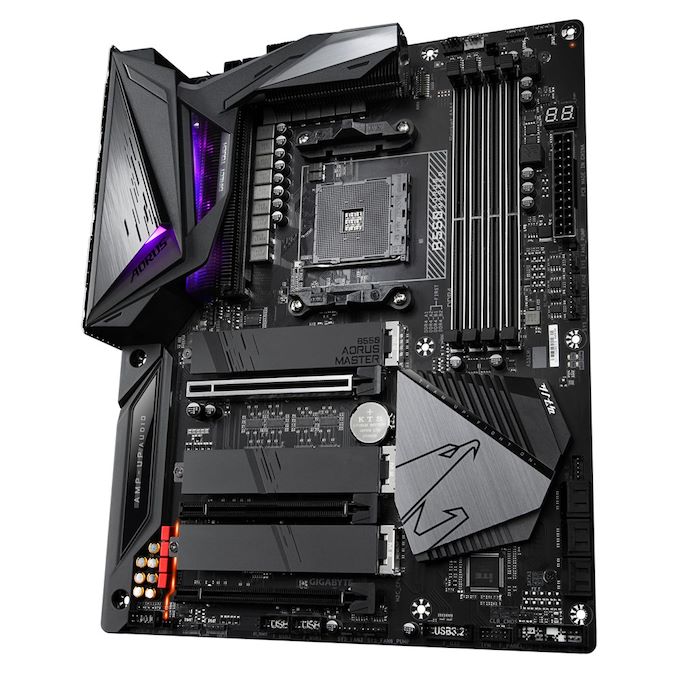
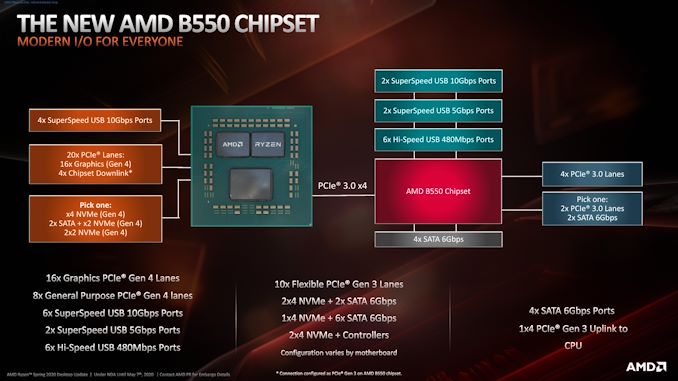
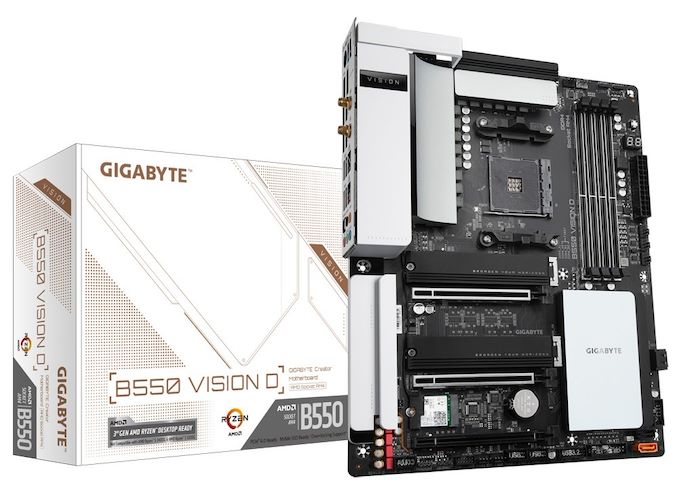
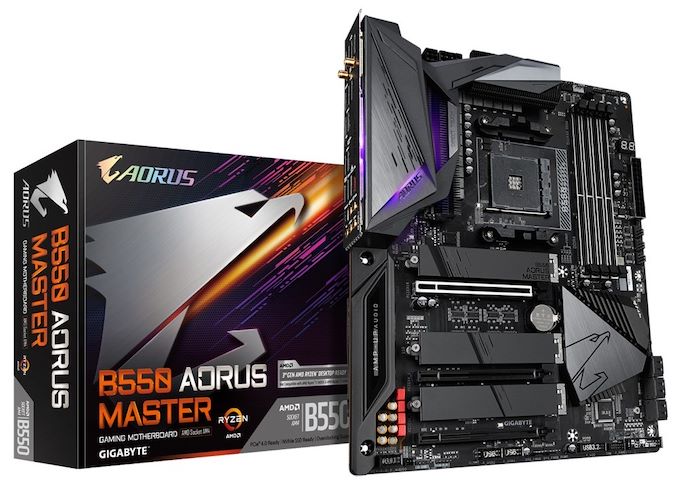

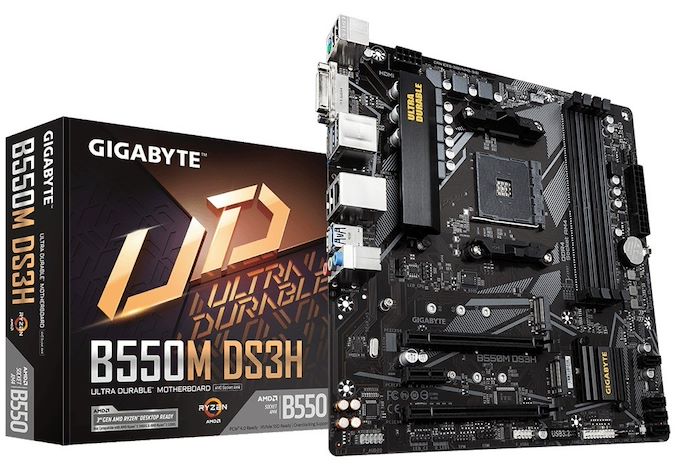








101 Comments
View All Comments
Operandi - Tuesday, June 16, 2020 - link
Looks like some nice mATX versions this round, nice!YB1064 - Thursday, June 18, 2020 - link
I was hoping to see a $75-$90 board.kenjiwing - Tuesday, June 16, 2020 - link
Fortunately, this component is a unique motherboard among B550 and well worth reading up on [add link].Needs to be edited.
anirudhs - Tuesday, June 16, 2020 - link
There's a noise sensor which can adjust fan speed for maximum quietness with good thermals. Saw it on the KitGuruTech video. The noise sensor isn't there to spy on you though.PeterCollier - Wednesday, June 17, 2020 - link
The quality of the editing here is shit tier. Seriously, just run the articles through Grammarly before publication. It's free and it spots plenty of errors.Heavenly71 - Tuesday, June 16, 2020 - link
Sadly none of the mITX boards have more than 6 external USB ports. My old ASUS mITX has 8! And in really small mITX cases you can't add a bracket with more USB, because the two brackets are already used by the gfx card. Guess I have to wait for an enthusiast mITX board )-:damianrobertjones - Tuesday, June 16, 2020 - link
Or, just maybe, get a usb dongle with 4 ports?Mr Perfect - Tuesday, June 16, 2020 - link
That is disappointing. The number of USB devices people need to plug in can't be dropping, surely? I know I've got more now then even a year ago.rrinker - Tuesday, June 16, 2020 - link
Are they really going up? I have 2 USB devices plugged in to my system - a keyboard and a mouse. I occasionally plug a USB stick in one of the front ports to transfer files. My phone and tablet sync over wifi, they don't get plugged in. I have a charger behind my desk and a cable to charge them. My printer is on the network.The one place I DO need lots of USB ports is also the place where I have a small cube case machine, with no discreete GPU, because it doesn;t need one. On that one I added a USB PCI card to get enough ports. In addition to the keyboard and mouse, that machine is on my workbench where it connects to several electronic test instruments and I have multiple cabled for programming microcontrollers. I also have a USB microscope for board inspection. And then I have 3 more USB devices connected for my other hobby that shares the bench. Plus a front port kept free for USB sticks.
So the use case I have for more USB has the PCI slots open to add expansion cards, the use case where I have a discrete GPU eating up the slot space doesn't need an excess of USB ports.
DigitalFreak - Tuesday, June 16, 2020 - link
I use 3 USB 3.0 ports just for my Oculus Rift